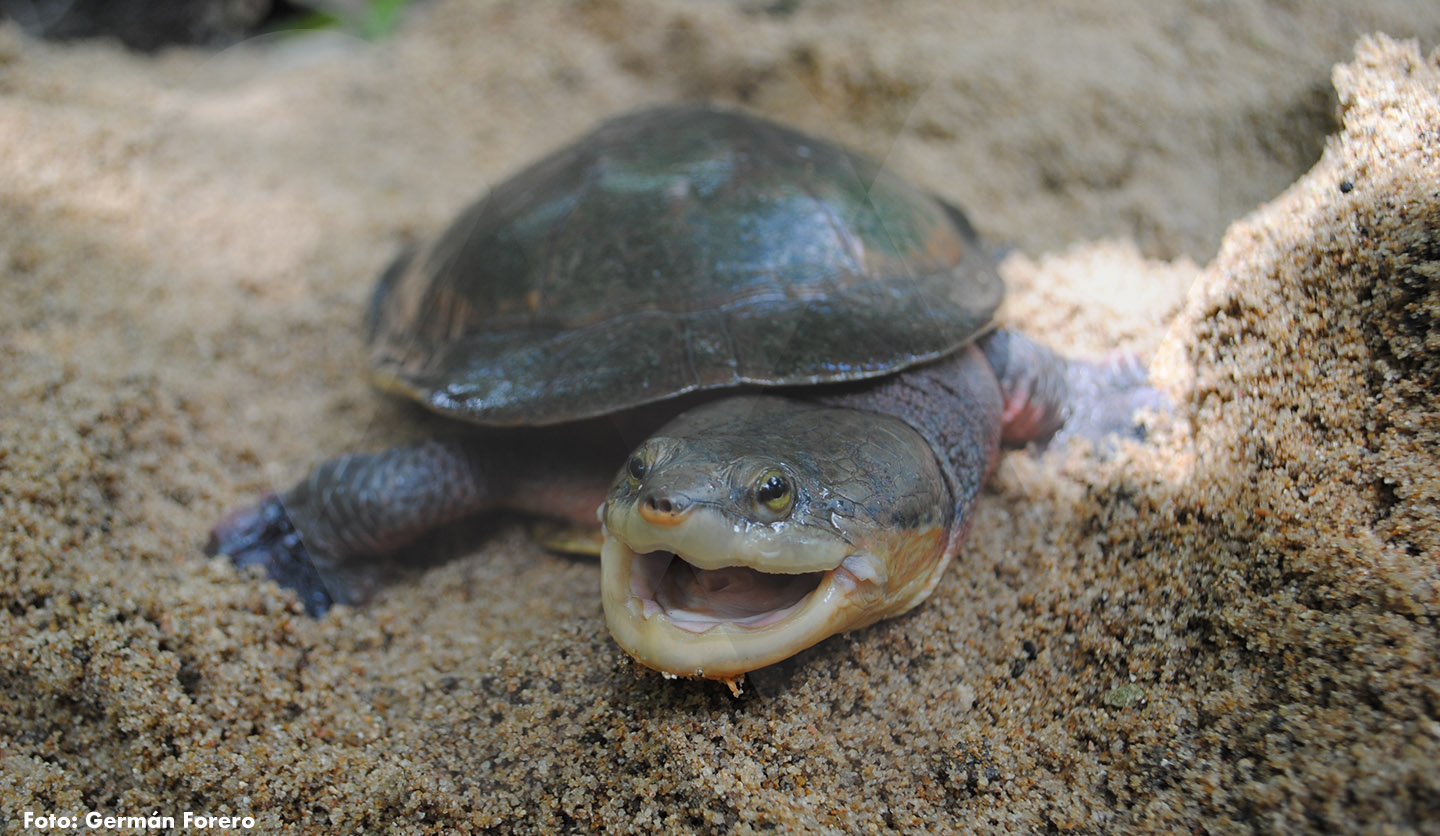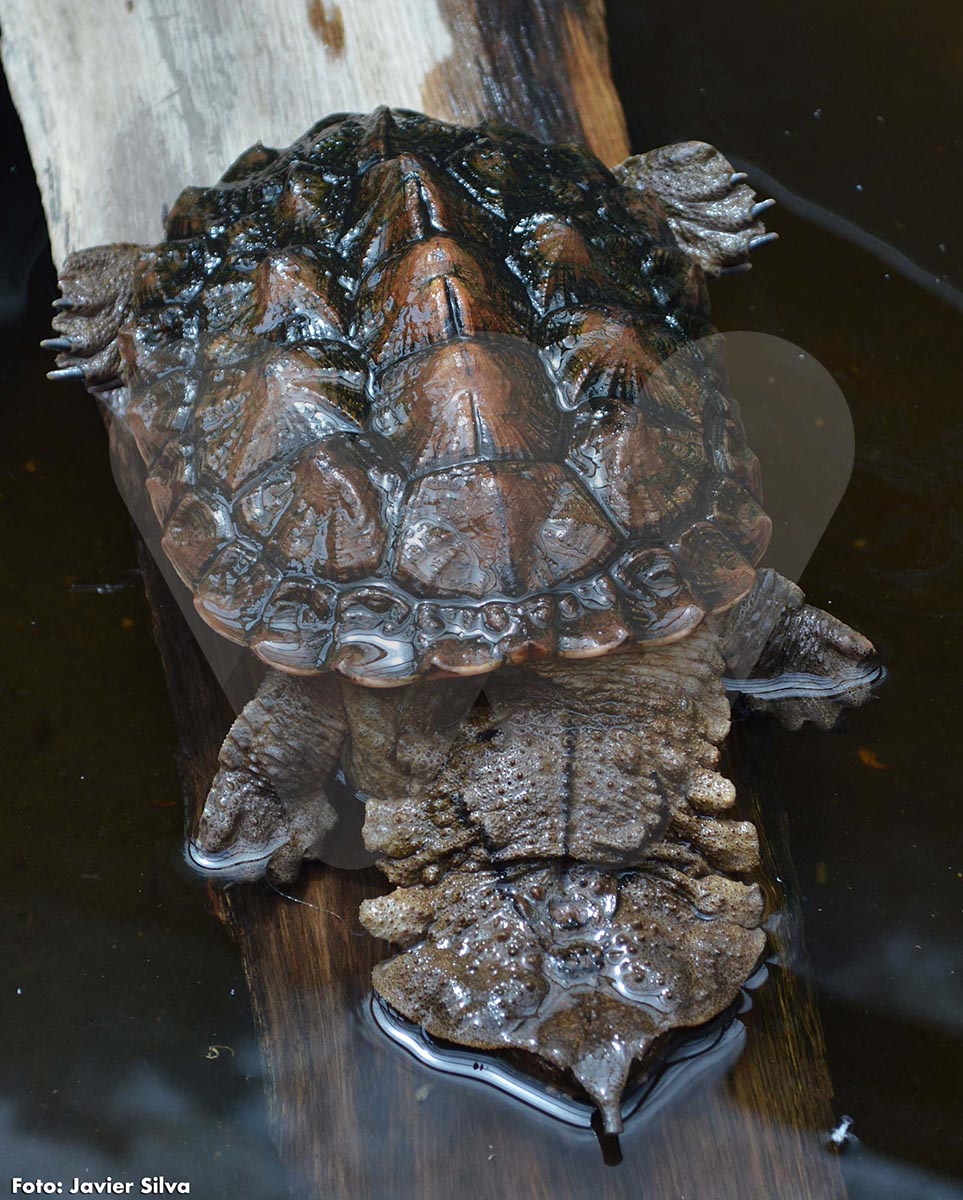A study published in the magazine Current Biology, with the participation of fifty researchers, among them Germán Forero-Medina, Science Director of WCS Colombia, reveals that more than half of the planet’s 360 species of continental turtles and tortoises are in danger of extinction. They explain that Latin America, unlike Asia, is still on time to act for the rescue of many of these threatened species.

Dahl’s toad-headed turtle, a Caribbean dweller, is a critically endangered turtle species due to the destruction of the dry forest, its habitat. For years, its ecosystem and, in the process, the living conditions of this reptile, endemic to this Colombian region, have been devastated. Currently, and as a result of the almost irreversible damage to its home, the populations of Mesoclemmys dahli, its scientific name, are fragmented in groups of very few individuals, with circulation and connection difficulties.
Due to the environmental difficulties they face with their degraded surroundings, some have adapted to different environmental conditions and have begun to use pasture zones where they can survive. Others are inbreeding, risking irreversible diseases.
This is an unfortunate story that is no longer only a local event. It drew the attention of a group formed by 51 researchers from different parts of the world, many of them specialists of the International Union for Conservation of Nature (IUCN), who recently published the report ‘Turtles and tortoises are in trouble’ that indicates that more than half of the 360 species of continental or terrestrial turtles of the world are in danger of extinction. This classifies them as one of the vertebrate animals with more individuals in risk.
“Their disappearance would imply the loss not only of millions of years of evolutionary history, but also of biodiversity elements that contribute significantly to the food chain (biomass), seed dispersion, transportation of energy between aquatic and land ecosystems and that have huge cultural significance”, explains Germán Forero, Science Director of WCS Colombia and coauthor of the report.
The problem that affects Dahl’s toad-headed turtle, included in this timely but uncomfortable list, is also faced by many other species.
In accordance with the report, habitat destruction – to make way for agriculture and livestock farming or even for the development of infrastructure projects, such as highways or dams – is one of the greatest pressures faced by these reptiles in the entire planet, especially in America and Africa.
Another species that is in the limit of its survival due to these frequent landscape damages is Psammobates geometricus, a magnificent turtle due to the radiating pattern that decorates its shell. It is distributed in a very small territory of southwestern Cape Province, South Africa, a habitat almost 97% deteriorated due to the construction of farms and housing projects. Their estimated wild population is between two thousand and three thousand individuals.
They are transformed into pets
It’s ironic. Turtles have been comprehensive components of global ecosystems for 220 million years and have played an important role in human culture for 400 thousand years, since the appearance of Homo sapiens. But it is now, precisely at this time of the planetary history, when this historically cordial relationship is more deteriorated than ever.
Because one of the greatest problems they defy, says the research, is illegal traffic. They are taken out of their territories forcibly, to be sold as collectibles. This happens to the ploughshare tortoise (Astrochelys yniphora), endemic to Madagascar (Africa), one of the rarest in the world due to the arched form of its shell, a characteristic that attracts traffickers from the entire world. It could become extinct in a few years, as there are only 300 specimens left. It is one of the most threatened turtles in the world.
In Europe, there are frequent attempts to introduce shipments of the so-called ‘Chinese three-striped box turtle’ of the genus Cuora. This turtle, a sought-after commodity among collectors, is also distributed in Taiwan and Japan.
This illegal traffic is also driven by the use of its parts for the production of supposedly miracle drugs. In China, for instance, the ‘golden coin’, vernacular name for Cuora trifasciata, endemic to the south of the country and the north of Vietnam, is widely used. They grind its shell and use this substance to prepare a beverage called ‘guilinggao’, allegedly with properties to improve skin health. Due to this massive use without any scientific support, this turtle is critically endangered.
But chelonians have other enemies. Climatic change can increase the birth of females, due to variations in temperature at their nesting sites. Forest fires – many provoked to open space for crops -, the attack of invasive species and the pollution of wetlands or other ecosystems by mining activities or industrial projects - that throw polluting materials in water sources -, all impact turtles. An example of the latter case is Graptemys geographica, known in the United States and Canada as map turtle due to the designs on its shell, which is almost extinct because of its frequent exposure to coal mining residues.

The document also mentions the massive commercial consumption of turtle meat. It points out the case of the whaling ships that, in the XVII and XIX centuries could collect, in one day, up to 13,000 specimens with commercial purposes. Although in more recent years, the commercial consumption of turtle meat and eggs has decreased, it has impacted, for instance, the critically endangered Podocnemis expansa, known in Colombia as ‘charapa’, and present in other six South American countries, including Brazil.
Latin America is still on time
One of the most important messages of this report is that, although the outlook is uncertain and not very optimistic for this taxonomic group, Latin America, unlike Asia (where part of its native reptiles will be extinct in 10 or 20 years) still has alternatives to rescue or conserve in the long run, many of the endangered species.
“We have the option to address the threats because we still have viable populations. And, above all, to fight for our chelonians, so they will not become part of the insatiable illegal traffic, as is happening with the matamata turtle (Chelus fimbriatus)”, adds Germán Forero.

In South America, for instance, there are impacted populations, but there is still time to act, with conservation programs focused on the reduction of female mortality and with initiatives to fight illegal traffic. An important proposal, among other additional options, is the participation of local communities in conservation and monitoring processes, as well as orienting their sustainable management, when viable.
Many alternatives are suggested, because turtles deserve a different treatment. They developed on the planet long before the birds we see today. For that long and generous past, it is only fair that they have these and many other opportunities on this Earth to recover their lineage.